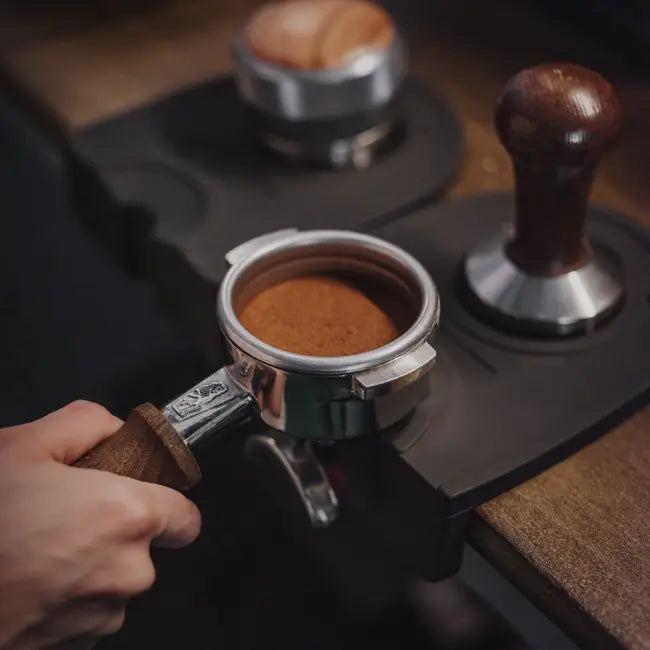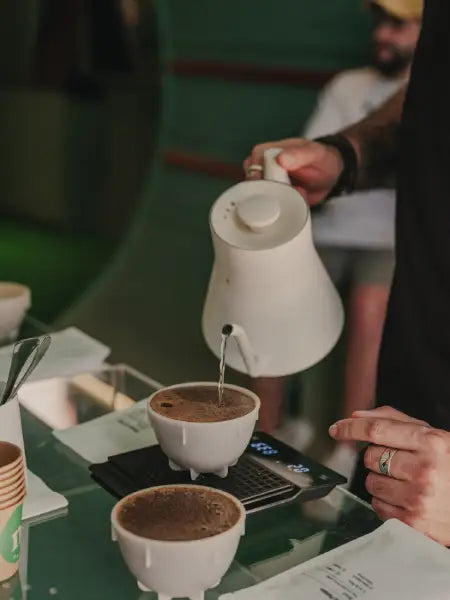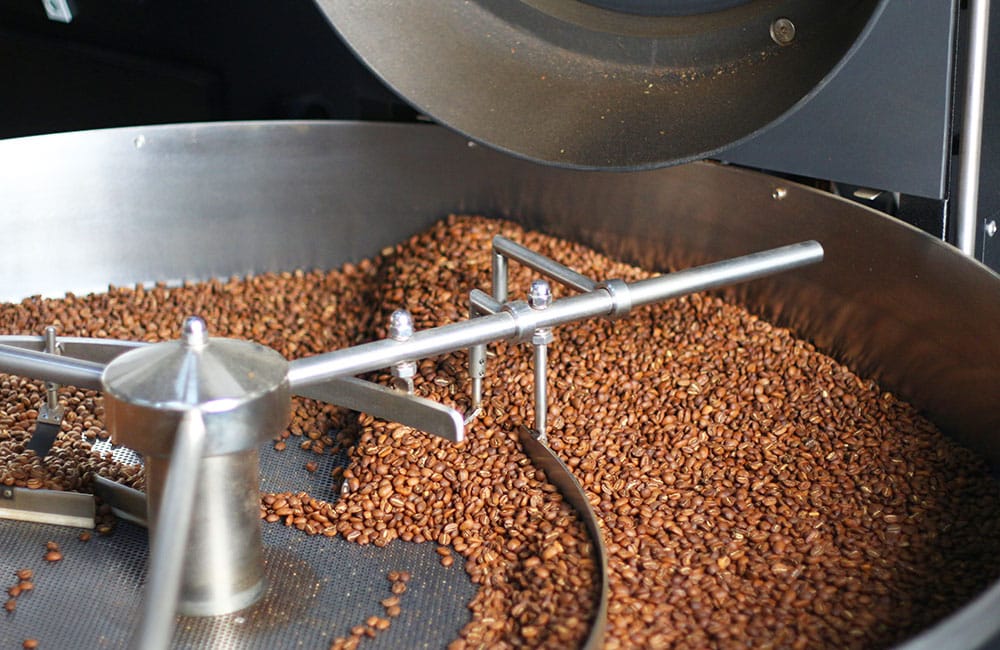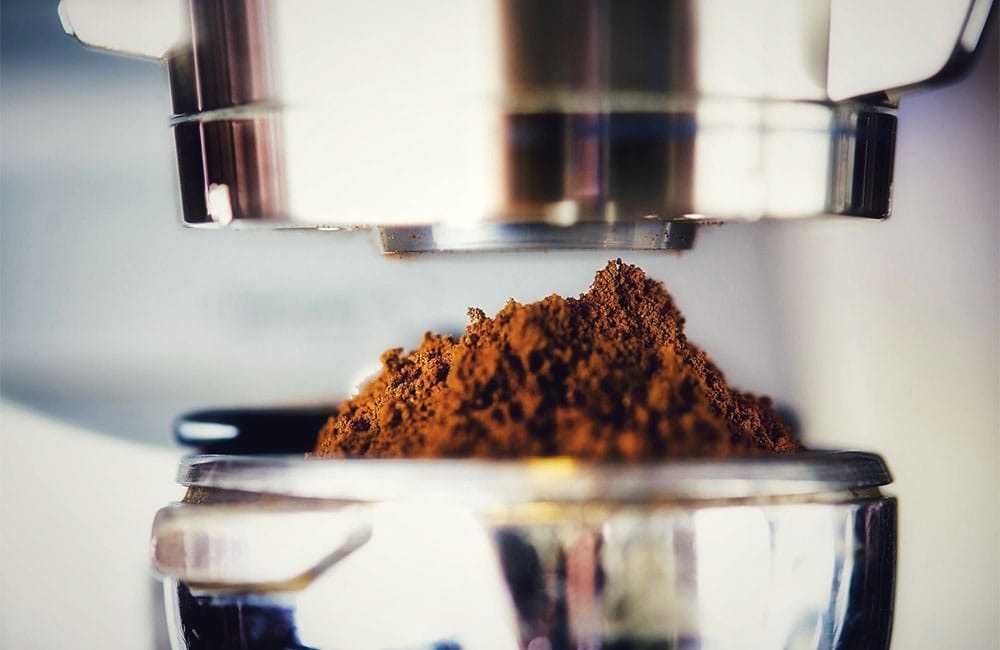Café en grano
Imagina que te han encomendado un mensaje y te han pedido que lo mantengas en secreto. Está guardado en un sobre y te han pedido que se lo entregues a una persona concreta. Para hacer esto tienes que viajar hasta encontrarla.
Durante el viaje te encuentras con dificultades para mantener el mensaje oculto, pero haces todo lo posible para que no salga a la luz hasta que no llegue a su destinatario. La sorpresa y la alegría serán mayores si nadie la estropea.
Ese es el viaje del café en grano desde la planta hasta la taza. Y la persona a quien va dirigido el mensaje, una deliciosa explosión de sabor, eres tú.
Todos aquellos involucrados en la cadena de producción del café deberían hacer lo posible por mantener el secreto bien guardado hasta que llegue a ti.
Desde el caficultor hasta el barista cada uno aportará su conocimiento para que cuando te llegue nadie haya estropeado la sorpresa. Y tú tampoco deberías hacerlo moliendo el café antes de tiempo.
Qué es el café en grano

Cerezas de café madurando en la planta
El café en grano es la semilla de la planta de los cafetos. Los cafetos producen unas cerezas en cuyo interior está la semilla. Por lo que un grano de café es la semilla de una fruta, igual que podría serlo el hueso de un melocotón.
Al igual que otras frutas, las cerezas del café se ven afectadas por muchos factores como el lugar de cultivo, las particularidades del terreno donde crece, la cantidad de agua que reciben mientras crecen o cuándo son recogidas, entre otros.
La diferencia es que, en las plantas de café, lo que nos interesa es la semilla de la cereza y no la fruta en sí. Y lo que hace particulares a estas semillas es que, al procesarlas, tostarlas y prepararlas ofrecen la bebida que conocemos como café.
Variedades de plantas de café
Hay dos variedades principales de plantas de café que son cultivadas para este propósito: el coffea arabica y el coffea robusta, aunque el café de especialidad se centra en la variedad arábica por ser más aromática y rica al paladar. En este post sobre el café de especialidad hacemos un repaso sobre todos los factores que afectan al café en grano.
Por lo tanto, podríamos decir que el mejor café en grano será el que mejor haya mantenido las cualidades únicas de su variedad desde el cultivo hasta tu taza.
Y la mejor forma de hacer esto es mantenerlo en grano hasta el momento de prepararlo. Pero veamos por qué.
Por qué comprar café en grano

La razón principal de comprar café en grano es que conserva mejor las cualidades organolépticas
La razón principal por la que comprar café en grano en lugar de molido es porque el café en grano conserva mejor las cualidades organolépticas. Es decir, producirá un café más fresco, con más sabor y mejor aroma.
La semilla del café está compuesta por muchas sustancias químicas naturales con diferentes capacidades solubles. Estos compuestos solubles son los que, una vez en contacto con el agua, traspasan a esta sus propiedades.
El oxígeno es el principal elemento que debemos controlar a la hora de mantener el café en su punto optimo. Al entrar en contacto con el café, crea una reacción que hace que las propiedades se alteren.
Esta reacción se conoce como oxidación del café y es la razón principal del envejecimiento del café y de que este pierda cualidades.
Descubre el verdadero sabor del café con nuestra selección de cafés en grano
El proceso de oxidación del café
Químicamente, la oxidación es cualquier reacción en la que uno o más electrones se mueven de una sustancia química a otra, produciendo dos compuestos diferentes.
La razón por la que esto sucede es porque el oxígeno quita electrones de otra molécula. La molécula que pierde un electrón se vuelve inestable y reactiva.
La oxidación del café se produce cuando las moléculas de oxígeno entran en contacto con los diferentes compuestos del café. Al moler el café estamos facilitando e incrementando la superficie sobre la que el oxígeno puede actuar con lo cual la oxidación se acelera.
Por esto hemos de mantener el café en grano hasta que estemos listos para su preparación.
Compuestos del café afectados por la oxidación

Tueste de café en proceso
Hay dos compuestos principales afectados por la oxidación:
- Los compuestos orgánicos volátiles (COV): se oxidan a compuestos neutros. Esto da como resultado una pérdida de sabores agradables y de aroma.
- Los lípidos se oxidan para formar peróxido. Esto da como resultado la creación de aromas y sabores rancios.
Otros factores que aceleran este proceso de oxidación son la luz y el calor. La luz aumenta la tasa de oxidación de los lípidos y el calor hace que tanto los lípidos como los COV se oxiden más rápidamente.
Después del tueste el café expulsa CO², un proceso llamado desgasificación. El café verde sufre una oxidación mínima natural, pero tan pronto sale de la máquina de tostar el proceso se acelera.
Desgasificación del café tostado
La desgasificación del café es la expulsión de gases de las semillas una vez tostadas. Durante el proceso de tueste los granos sufren cientos de reacciones químicas diferentes.
Una de ellas es que cuando los carbohidratos de las semillas del café se descomponen en moléculas más pequeñas, los granos comienzan a tomar un color dorado y se crea vapor de agua y dióxido de carbono.
En los primeros días después del tueste, los granos de café continúan expulsando CO². Si se prepara antes de que el proceso se haya estabilizado puede dar lugar a una extracción desigual.
El empaquetado con válvula unidireccional y sellado térmico deja escapar estos gases y no permite la entrada de oxígeno. Esto tendrá como resultado una desgasificación regular y el retraso del proceso de oxidación.
Esto se debe a que, tras el sellado térmico, el CO² que desprende el café, al ser más pesado que el oxígeno lo desplaza y se crea ‘una especie de cámara de gas inerte’, que retrasa la oxidación y que siga perdiendo cualidades.
Conservación del café en grano

Empaquetando pedidos de wholesale en Ineffable Coffee
Unos de los factores clave que hemos de tener en cuenta cuando vamos a comprar café en grano es la forma en la que se ha conservado, puesto que esto hará que el proceso de oxidación esté controlado.
La mejor forma de conservar el café una vez tostado es en grano, en paquetes con válvulas unidireccionales y sellado térmico, como ya hemos visto.
Otras modalidades serían el empaquetado al vacío o el empaquetado con inyección de un gas inerte como el CO² o el nitrógeno. En ambos casos se desplaza al oxígeno para que no reaccione negativamente sobre el café tostado.
Lo ideal es encontrar un equilibrio entre la correcta desgasificación del café y el control de la oxidación de este.
Una forma de conseguir esto es tostando el café correctamente y empaquetándolo en envases con válvulas unidireccionales lo antes posible, como hacemos en Ineffable Coffee.
Las bolsas con válvulas unidireccionales, además de retrasar el proceso de oxidación (hasta que son abiertas nuevamente) al expulsar el CO² evitan la acumulación de presión y una posible rotura de la bolsa.
Relación de molienda en función a método de preparación
Esta es una relación aproximada de la molienda que necesitaremos dependiendo del método de preparación que vayamos a utilizar:
- Espresso: molienda muy fina (un poco más fino que sal fina)
- Mokka: molienda fina (como sal fina)
- Aeropress: molienda media (un poco más grueso que sal fina)
- V60: molienda media (un poco más grueso que sal fina)
- Chemex: molienda media (un poco más grueso que sal fina)
- Émbolo: molienda gruesa (como sal gruesa)
En Ineffable Coffee hemos preparado unas guías para hacer café con diferentes métodos que puedes consultar aquí.
La mejor manera de moler el café antes de prepararlo es hacerlo con un molinillo que lo muela y no lo triture.
Esta es la diferencia principal entre los molinillos eléctricos de aspas comunes y los molinillos manuales que vendemos en Ineffable Coffee, como el HARIO Mini Mill o el molinillo de café manual Comandante.
Otras de las ventajas de estos molinillos es que ofrecen una molienda uniforme y no calientan el café mientras lo muelen.
Disfruta del café de temporada, visita nuestra tienda
Comprar café en grano

La molienda del café es sumamente importante para una extracción correcta
Siempre es preferible comprar el café en grano y molerlo en el momento de prepararlo. Pero sabemos que, para mucha gente, esto o no es posible o puede no ser conveniente.
Aunque nuestra recomendación es siempre comprarlo en grano, lo que aconsejamos en estos casos es pedir que nos lo muelan cuando lo compramos de acuerdo con el método de preparación que vayamos a usar y que utilicen un envase con válvula.
Comprar café que viene molido y empaquetado debería ser nuestra última opción, especialmente si este paquete no tiene válvula.
Otras cosas que hemos de tener en cuenta son la fecha de tueste y el tipo tueste. Si queremos un café en óptimas condiciones debemos consumirlo en las ocho semanas después de ser tostado, si ha sido conservado correctamente.
El tipo de tueste, ya sea un tueste más claro u oscuro, dependerá de nuestros gustos y preferencias. Pero nunca hemos de comprar un café demasiado tostado o quemado puesto que estaremos perdiendo cualidades organolépticas.
Y hemos de huir, como la peste, de cualquier tueste torrefacto. Este no solo no ofrece ninguna riqueza al paladar sino que además es perjudicial para la salud.
Técnicas de marketing de las grandes superficies para vendernos café
A la hora de comprar café hemos de ser conscientes de las diferentes técnicas de marketing que utilizan muchas marcas de café o grandes superficies a la hora de vendernos café.
Los términos "café superior", "café gourmet" o similares no tienen un significado concreto, y, por lo tanto, no denotan un café mejor, aunque probablemente sí más caro.
También hemos de tener en cuenta que un café orgánico -aunque indudablemente sea mejor para el planeta- no es necesariamente un mejor café.
En cambio, el término “café de especialidad” nos asegura una café de la máxima calidad y que se han seguido las mejores prácticas en toda la cadena de producción.
Si quieres saber más sobre el café de especialidad puedes leer este post en el que resumimos todo lo que es y lo que representa el café de especialidad.
Equípate con nuestros complementos, visita nuestra tienda
El mejor café en grano

Empaquetando café en grano en Ineffable Coffee
Si queremos apostar por lo seguro, entonces debemos buscar café de especialidad. Este, además de ofrecernos unas propiedades únicas al paladar, es respetuoso con el planeta y con los productores.
Este es el tipo de café con el que trabajamos en Ineffable Coffee. Si te das una vuelta por nuestra tienda podrás ver las diferentes variedades que tenemos y que responden a la disponibilidad de temporada.
Además, seguimos todos los protocolos que hemos mencionado para una conservación óptima del café y todos los protocolos sanitarios que este momento exige.
Eso sí, ¡pídenoslo en grano!









